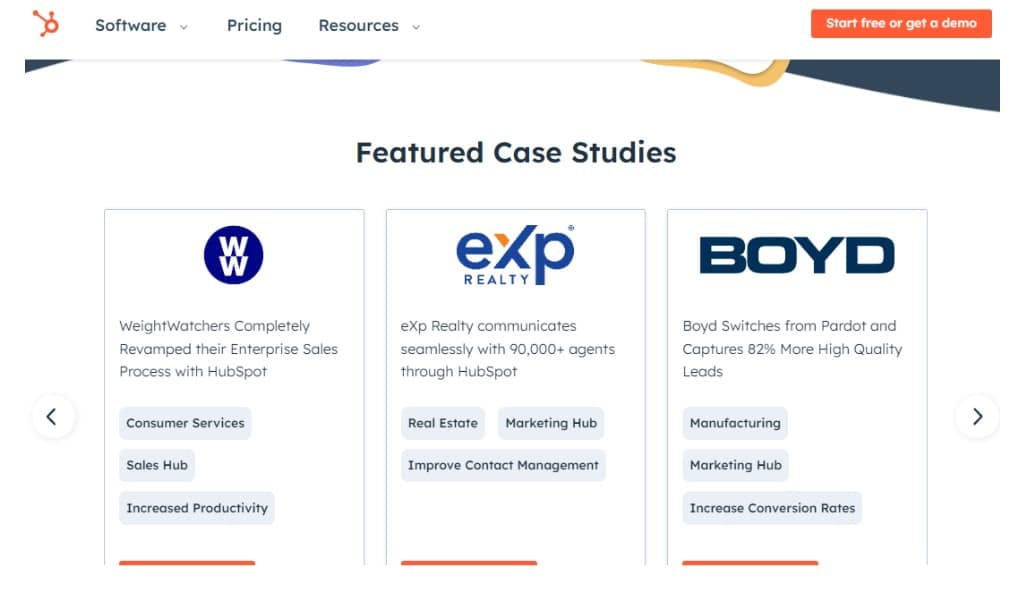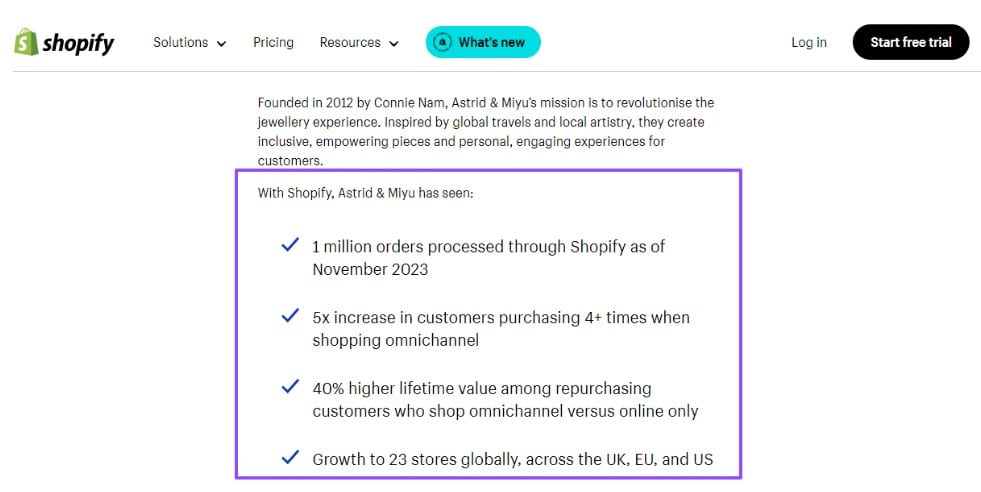You can significantly improve your conversion rates by using social proof. Studies show that 88 percent of consumers trust user reviews just as much as personal recommendations.
You can build trust and credibility with your potential customers by displaying customer testimonials, reviews, ratings, and endorsements.
Social proof reduces customers’ risk and encourages engagement, ultimately leading to more conversions. In this blog, you’ll discover nine effective ways to use social proof to enhance your marketing efforts and increase your conversions.
Understanding social proof
Social proof is a concept where you look to the actions and opinions of others to help guide your own decisions. When you see others having positive experiences with a product or service, you’re more likely to trust it yourself.
In marketing, this means using elements like customer testimonials, reviews, ratings, case studies, endorsements, and social media shares to build trust and credibility.
By showcasing these positive experiences, you can influence potential customers and increase your conversions.
Why social proof is critical for increasing conversions
Social proof is essential for increasing conversions because it uses the psychological tendency to follow the actions of others. Here’s why it’s so effective:

1) Builds trust and credibility
Trust and credibility are important factors for potential customers when buying. As discussed above, seeing others have had good experiences with your product or service through testimonials, reviews, and ratings builds confidence in your brand.
This confidence comes from the belief that if others like what you offer, they will too. Trust helps customers feel sure about choosing your brand over others. Social proof is key here because it gives real proof of your brand’s reliability and the benefits it offers. This proof not only confirms your claims but also creates a good reputation that appeals to new customers who want to feel sure before buying.
2) Reduces perceived risk
Making a purchase can be risky, especially if the buyer is unfamiliar with your brand. Social proof, such as reviews and testimonials, reassures them that others have successfully used and found value in your product, thereby reducing the perceived risk.
Positive experiences with your customer service can also be shown in these reviews, further reducing the feeling of risk by showing that your company is responsive and supportive.
3) Creates FOMO (Fear of Missing Out)
When people see that others are benefiting from your product or service, they don’t want to miss out on those benefits. This fear of missing out can be a powerful motivator, leading them to take action quickly.
4) Validates purchase decisions
Positive feedback from others confirms a potential customer’s choice to buy. When they see that others have also chosen your product and are happy with it, it makes their own decision to buy feel more certain.
This confirmation shows them that their choice is backed by others who have had good experiences, giving them more confidence to go ahead with their purchase. This confidence helps customers feel confident that they are making a good decision, which motivates them to go ahead and buy from your brand.
5) Increases engagement
Social proof encourages more interaction with your brand. When people see user-generated content, social media shares, and influencer endorsements, they’re more likely to engage with your content, increasing your brand’s visibility and reach.
6) Boosts credibility
Endorsements from influencers or celebrities add more trustworthiness to your brand. If someone they look up to and admire uses your product, they’re more likely to trust your brand and choose to buy from you.
This endorsement shows that respected individuals believe in your product’s quality and benefits, which can convince potential customers that your brand is reliable and worth trying. This increased credibility can lead to more people trusting and buying from your brand, as they see it endorsed by someone they admire.
9 forms of social proof
Most common forms of social proof used in marketing:
- Customer testimonials: Quotes or reviews from satisfied customers supporting your product or service.
- Case studies: Detailed stories of how your product or service has helped specific customers achieve success.
- Reviews and ratings: Feedback and ratings are provided by customers on platforms like Yelp, Google Reviews, or Amazon.
- Influencer endorsements: Recommendations or mentions of your product or service by influencers or industry experts.
- User-generated content (UGC): Content created by users, such as photos, videos, or posts, showcasing their experiences with your brand.
- Social media shares and mentions: Instances where customers share their positive experiences or mention your brand on social media platforms.
- Trust badges and certifications: Symbols or certifications indicate your product meets certain standards or has received recommendations from reputable organizations.
- Celebrity endorsements: Public endorsements or use of your product by celebrities or well-known personalities.
- Quantitative proof: Statistical data or numbers that show the popularity, usage, or success of your product or service (e.g., number of customers, sales figures).
9 ways to use social proof to increase your conversions
1) Customer testimonials
Customer testimonials are positive statements or reviews from satisfied customers about your product or service. They act as personal recommendations and can significantly influence potential buyers by presenting real experiences and outcomes. Testimonials build trust and credibility, providing social proof that others have benefited from what you offer.
Examples:
- Amazon: Many product pages feature customer reviews and star ratings, helping shoppers make informed decisions based on others’ experiences.

(Customer reviews on Amazon)
- Slack: Slack’s website showcases testimonials from companies, highlighting how these organizations use their platform to improve communication and productivity.

(Source)
Best practices for collecting and displaying testimonials
Collecting testimonials
- Ask at the right time: Request testimonials when customers are most satisfied, such as right after a purchase or a positive experience.
- Use surveys and feedback forms: Include questions that encourage detailed responses about their experience with your product or service, online surveys and tools can easily do this.
- Offer incentives: Provide discounts or rewards in exchange for honest testimonials.
- Use specific details: Encourage customers to share exact details about their experience. Testimonials with clear examples and measurable outcomes are more convincing.
Additionally, ensuring your messages reach the right audience by cleaning your email list can help in collecting more accurate and relevant testimonials.
Displaying testimonials
- Be authentic: Use real names, photos, and specific details to make testimonials more relatable and credible.
- Showcase a variety: Include testimonials that highlight different aspects of your product or service to appeal to a broader audience.
- Highlight key points: Use bold text or pull quotes to emphasize the most impactful parts of the testimonials.
- Display prominently: Place testimonials on key pages of your website, such as the homepage, product pages, and landing pages. Ensure they are easily visible to visitors.
- Use video testimonials: Video testimonials can be even more compelling than written ones. They allow potential customers to see and hear real people talking about their positive experiences. If you want to easily showcase testimonials or reviews on your site, consider using a free pop-up creator to display them at the right moment and drive more conversions.
2) Case studies
A case study is an in-depth, detailed analysis of how your product or service helped a specific customer or client solve a problem or achieve a goal.
Unlike testimonials, which are brief and focused on the customer’s overall satisfaction, case studies provide a complete description that includes the background, challenges faced, the solution provided, and the results achieved.
They offer a more detailed and analytical perspective, often backed by data and specific metrics.
To create convincing case studies, start by selecting customers who have experienced significant success with your product or service and are typical of your target audience.
Then, conduct detailed interviews with these customers to gather complete information about their challenges, the solutions your product or service provided, and the results they achieved.
To structure your case study keep the following points in check:
- Introduction: Provide background information about the customer and their initial challenges.
- Problem Statement: Clearly define the specific problems or goals the customer had.
- Solution: Describe how your product or service was implemented to address these issues.
- Results: Highlight the measurable outcomes and benefits the customer experienced.
- Conclusion: Summarize the key takeaways and the overall impact on the customer’s business.
Example: HubSpot’s website features many case studies detailing how their marketing software has helped companies increase leads, improve customer engagement, and boost sales.

(Source)
For example, their case study on the company “BOYD” highlights an 82% increase in leads after implementing HubSpot’s tools.
3) Reviews and ratings
Reviews and ratings are very important in influencing buying decisions. They give target customers insights and opinions from others who have already used the product or service. Positive reviews and high ratings can greatly increase a product’s appeal, as they act as recommendations from real users.
On the other hand, negative reviews can scare away potential buyers but also offer valuable feedback for improvement. Reviews and ratings help build trust and credibility, making customers more confident in their purchase decisions.
Example Businesses listed on Yelp receive ratings and reviews from customers.

(Source)
A high overall rating and positive reviews can attract new customers, while detailed feedback helps businesses improve their services.
4) Influencer endorsements
Influencer endorsements involve partnering with individuals who have a large following and influence on social media or other platforms to promote your product or service.
The impact of influencer marketing is significant because these influencers have built trust and credibility with their audience. When an influencer endorses your product, it can enhance your brand’s visibility, reach a wider audience, and drive more sales.
The personal connection and authenticity that influencers have with their followers make their recommendations powerful and persuasive.
Example: Canva collaborates with design influencers and social media experts to highlight the ease of creating professional graphics with their software.

(Source)
Influencers create tutorials and share their designs using Canva, driving engagement and new sign-ups.
5) User-generated content (UGC)
User-generated content (UGC) refers to any content created by customers or users about a brand, product, or service. This can include photos, videos, reviews, blog posts, social media posts, and more.
UGC is highly valuable because it is authentic and trustworthy, coming directly from real users rather than the brand itself. It helps build a sense of community and trust, as potential customers see real people enjoying and benefiting from the product or service.
To encourage customers to create and share content:
- Create Hashtags: Develop unique and memorable hashtags for your brand or specific campaigns to make it easy for customers to share and for you to find UGC.
- Run Contests and Challenges: Host contests or challenges that encourage customers to share their content for a chance to win prizes or be featured on your brand’s channels.
- Offer Incentives: Provide discounts, freebies, or loyalty points as rewards for customers who create and share content about your brand.
- Feature UGC: Regularly showcase user-generated content on your social media channels, website, or marketing materials. This recognition motivates more customers to share their experiences.
- Engage with UGC: Like, comment, and share user-generated content to show appreciation and build a stronger connection with your audience.
6) Social media shares and mentions
Social media shares and mentions are powerful forms of social proof. When people share your content or mention your brand on social media, it signals to their followers that your brand is trustworthy and worth checking out.
These actions can increase your reach and influence, as users are more likely to trust recommendations from their peers. Shares and mentions can lead to increased visibility, engagement, and ultimately, more conversions.
7) Trust badges and certifications
Trust badges and certifications are symbols that indicate your product or service meets certain standards or has been approved by a reputable organization.
These badges show that your brand is reliable and trustworthy. They help convince customers that your business adheres to specific quality, security, or ethical standards.

(Source)
8) Celebrity endorsements
Celebrity endorsements involve well-known personalities promoting a product or service, like actors, athletes, or influencers.
These endorsements use the celebrity’s fame, credibility, and influence to significantly increase brand visibility, trust, and sales. By teaming up with a celebrity who has a large and loyal fan base, brands can effectively use the celebrity’s popularity to connect with and persuade consumers.
This approach connects with consumers emotionally and highlights the inspiring qualities that celebrities represent, making the brand more appealing and creating positive impressions among consumers.
Consequently, celebrity endorsements are a powerful marketing method to enhance brand awareness, establish trust, and encourage consumers to buy.
Example: JuJu Smith-Schuster, an NFL player, has teamed with Microsoft since 2019, promoting products like the Microsoft Surface and Microsoft Bing.

(Source)
Additionally, in the fall of 2020, his charity, The JuJu Foundation, partnered with Microsoft Bing.
These collaborations helped Microsoft reach a broader audience, particularly sports fans and showcased the practical uses of their products in professional sports and charitable initiatives.
9) Quantitative proof (numbers and statistics)
Quantitative proof involves using numbers and statistics to show the success, popularity, or effectiveness of a product or service.
This could include metrics like the number of customers, sales figures, user ratings, or any measurable data that provides proof of your product’s value.
Numbers and statistics offer solid proof that can build trust and credibility with potential customers, showing them that real data backs your claims.
Example: Shopify frequently shares its sales figures, such as the total sales made by businesses using its platform.

(Source)
Conclusion
Using social proof in your marketing strategy is more than just a method; it’s a proven way to build trust, credibility, and engagement with your audience.
Whether through customer testimonials, case studies, influencer endorsements, or user-generated content, each form of social proof plays a crucial role in showing your brand’s value and encouraging more customers to take action.
By strategically using these nine techniques, you can not only increase sales but also build strong relationships based on honesty and real experiences.
Frequently Asked Questions
Q1) Does social proof increase conversions?
Yes, social proof significantly increases conversions by using the natural habit of people to follow the actions of others. When potential customers see that others have had positive experiences with your product or service, whether through testimonials, reviews, ratings, endorsements, or user-generated content, it builds trust and credibility.
Q2) What are the benefits of social proof?
Social proof offers several benefits, including building trust and credibility by showing that others have had positive experiences with your product or service. It reduces the feeling of risk for customers, making them more comfortable with their buying decisions. Social proof can also create a sense of urgency or FOMO (Fear of Missing Out), encouraging quicker decisions.
Q3) What are the disadvantages of social proof?
The disadvantages of social proof include relying too much on it, which can reduce your brand’s authenticity and originality if not managed carefully. Negative reviews or feedback, which also count as social proof, can damage your brand’s reputation if not handled quickly and effectively.
Q4) What does social proof mean in digital marketing?
In digital marketing, social proof refers to how positive feedback, testimonials, and reviews from other customers or influencers influence buyers. It is important because it convinces consumers to buy by showing that a product or service is liked and trustworthy. When used well, social proof helps you improve how people see your brand and keep customers coming back in a competitive online market.
Q5) Does social proof increase sales?
Yes, social proof increases sales by showing new customers that many people have already had good experiences with your product. When they see positive feedback, such as happy customer stories, it builds trust and confidence. This confidence reduces doubts and makes them more likely to buy.



